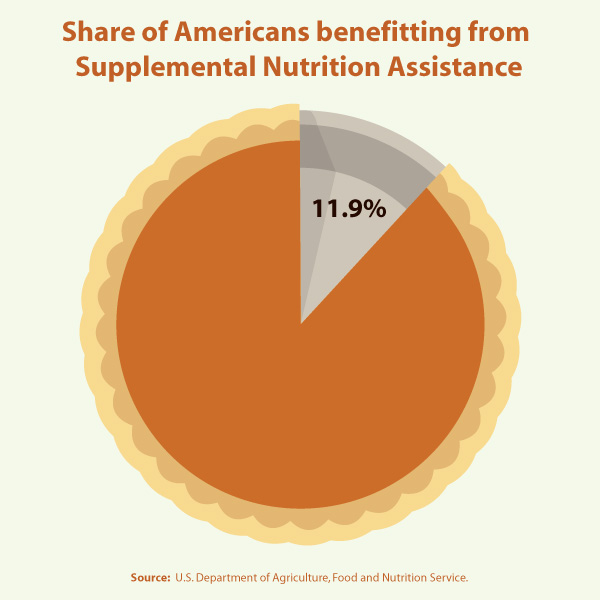This Thanksgiving, millions of Americans will eat a meal paid for with funds provided by the Supplemental Nutrition Assistance Program (SNAP), more commonly known as Food Stamps. The United States is currently providing supplemental nutrition benefits to 36.5 million people, or 11.9% of the American population (see Figure). That’s up from 9.3% last year and 6.7% a decade ago.

This rise reflects a growing number of Americans who are “food insecure.” Earlier this month, the U.S. Department of Agriculture reported that 17 million households—representing 14.6% of Americans— were food insecure, meaning they had difficulty putting enough food on the table at some point in 2008. That is the highest percentage on record, and it represents a significant increase over the 13 million food insecure households in 2007. The significant rise in unemployment since last year suggests that the level of food insecurity is much higher today.
People with limited assets are typically eligible for Supplemental Nutrition Assistance if they earn a poverty-level income: $903 per month after tax for an individual and $1,838 for a family of four.
The American Recovery and Reinvestment Act passed earlier this year widened eligibility for Supplemental Nutrition Assistance so that more adults without dependents could qualify. The Recovery Act also increased benefits. The average monthly payout for an individual increased from $114.81 per person to $133.25 per person. The increase provides additional relief to some of the country’s poorest individuals and families, while at the same time serving as an effective stimulus. The assistance provided by SNAP is like a direct cash transfer, that recipients spend quickly, returning to their local economies.
Costco Wholesale Group, one of the country’s largest warehouse-club chains, made the decision last month to accept SNAP for the first time, after an initial trial at six stores in New York City showed that it led to a rise in membership and sales.
Although the basic income elibibility for Supplemental Nutritional Assistance has not changed since the early 1990s, more families are qualifying today, with unemployment at a 26-year high of 10.2% and almost 16 million people out of work.
This Table shows the number of people receiving benefits and how much of the $4.5 billion of Recovery Act funds was spent on SNAP in each state.
